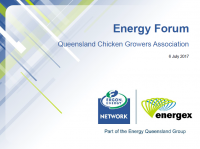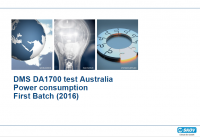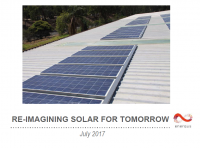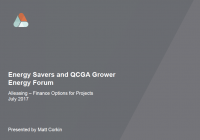Energy Efficiency by Sector
The Energy Savers program has undertaken audits at a number of Aquaculture farms through Queensland and case studies are available by clicking the ‘case studies’ button on the right.
See how a South Queensland prawns farm saved energy with a case study detailing the audit and implementation of pumping system upgrades with annual cost savings over $40,000. See full report HERE
The Sugar industry uses energy in the form of electricity primarily for irrigation and diesel for on-farm machinery including planting and harvesting.
CANEGROWERS is the peak body for Australian sugarcane growers.
Many projects are underway to improve irrigation efficiency, assisting growers to apply the right amount of water at the right time, achieving energy and water efficiencies, along with greater productivity.
As an active participant in the Rural Water Use Efficiency Program, CANEGROWERS has worked with growers to improve water efficiency and in conjunction with SRA have developed numerous information sheets to assist with irrigation, including the use of soil moisture sensors, crop water use and calculations for furrow irrigation.
As an active participant in the Rural Water Use Efficiency – Irrigation Futures program, CANEGROWERS has produced a series of Virtual Bus Tour videos on cane farms which have implemented water and energy saving measures.
Additionally, a number of tools have been developed in conjunction with Sugar Research Australia and the National Centre for Engineering in Agriculture (NCEA) to assist growers to calculate the ideal amount of water to apply to crops.
Smartcane BMP is the Cane Industry’s Best Management Practice program and the Irrigation module assists growers to improve efficiency. The BMP case studies provide some examples such as an Innisfail farmer who has saved fuel by working to reduce the number of passes in four paddocks, also leading to less soil disturbance. The farmer uses the quad-bike instead of the tractor for spot spraying, saving time and fuel.
The Burdekin Bowen Integrated Floodplain Management Advisory Committee (BBIFMAC) conducted an energy efficiency program for irrigators from 2013 – 2015 and developed numerous resources including fact sheets, case studies and presentations, all available at the project website. The site includes a number of Burdekin cane irrigation case studies.
CANEGROWERS Bundaberg has established an Irrigation Planning and Management Project to assist local growers to develop adaptive irrigation strategies, to maximise crop water use efficiency and economic return.
A Bundaberg cane farm installed a lateral move, a new pump and a larger-diameter irrigation main to save energy, and increase productivity, achieving a 60-70% reduction in $/ML pumped, and an overall annual benefit over $50,000. Read case study HERE
The Energy Savers program has undertaken audits at a number of cane farms through Queensland and case studies are available by clicking the ‘case studies’ button on the right.
QFF industry member Growcom has established the hort360 Best Management Practice program which includes an energy module to assist growers to manage energy consumption through best management practice in irrigation, machinery, packing sheds and cold rooms, workshop and office areas and lighting. The module includes a number of fact sheets to assist in developing energy efficient systems, for example, the Pump Efficiency: Factors and Costs fact sheet includes a comparison between the cost of pumping with diesel and electric pumps.
The Energy Savers program has undertaken audits at a number of Fruit and Vegetable farms through Queensland and case studies are available by clicking the ‘Case Studies’ button on the right.
The Clean Energy Finance Corporation have provided low cost finance to support energy efficiency projects in Horticulture and related supply chain, including:
- 100kW of Solar PV and a new Fruit grader at Radevski Coolstores in the Goulburn Valley, Victoria;
- Refrigeration system upgrade at a Victorian apple and chestnut grower, Nightingale Brothers to cut energy costs by nearly 40%
- The installation of solar thermal technology to power and heat a 20 hectare Greenhouse facility for Sundrop Farms in Port Augusta, South Australia.
See the AgInnovators resources for Energy Efficiency in Horticulture.
About 50% of a cotton farms energy consumption is for irrigation and about 25% for high-load tractor operations. Around 90% of a farms’ energy consumption is diesel according to the CottonInfo and CRDC Benchmarking report, Improving Energy Efficiency on Australian Irrigated Cotton Farms. The report identified that there are significant opportunities for energy savings on farm.
CottonInfo have developed energy efficiency information for Cotton Growers at their Energy Use Efficiency Page, which includes energy efficiency tips, case studies, fact sheets and other information.
My BMP is the Cotton industry’s Best Management Practice Program. See the Energy and Input Efficiency Module on the myBMP program. Rick Kowitz from Cotton Australia talked about the Energy and Input Efficiency Module at our Cecil Plains field day – see the presentation HERE.
Three recent CottonInfo case studies about irrigation efficiency are available here:
- A Gunnedah cotton farmer has used Solar Photovoltaic Power and variable speed drives to cut energy costs and water consumption.
- A Goondoowindi grower reduced lift pump diesel consumption from 2.7L/ML/m to 1.04L/ML/m by reducing the pump RPM using a Pump Efficiency Monitor.
- A Central West NSW farmer has installed a solar diesel hybrid 55kW bore pump leading to big cuts in fuel costs as well as greater irrigation efficiencies and a massive reduction in greenhouse gas emissions. A video version of the case study is available.
The Energy Savers program has undertaken audits at a number of cotton farms through Queensland and case studies are available by clicking the ‘Case Studies’ button on the right.
Nurseries can be energy intensive, with energy required for irrigation, potting equipment, heating of propagation areas. The state peak industry body is the Nursery & Garden Industry Queensland (NGIQ), representing producers, retailers and manufacturers across the nursery industry.
The Nursery and Garden industry’s Best Management Practice Program, ecoHort includes a decision guide and Suggested practices for Efficient Energy Use.
The Energy Savers program has undertaken audits at a number of Nurseries through Queensland and case studies are available by clicking the ‘Case Studies’ button on the right.
Dairy is an energy-intensive sector as dairies use electricity for extracting and cooling milk, lighting, heating water for sterilisation and irrigation. Some automated dairies may use additional energy to run these systems.
The Queensland dairy industry has been proactive in assisting its producers to improve energy efficiency in the dairy shed and with their irrigation system. Since 2011, 165 dairy shed audits were conducted on dairy farms in Queensland identifying opportunities around increasing energy efficiency and identifying other savings through appropriate tariff selection.
The program of assessments found a number of energy efficiency opportunities in Dairy and published some valuable resources for the industry including:
- Saving energy on dairy farms: A Smarter Energy Use booklet which includes a Dairy Shed Energy Saving Checklist
- Build a dairy shed with energy efficiency in mind fact sheet
- Case study from a Rathdowney Dairy featuring milk cooling, heat recovery and effluent pump
- Energy Benchmark report for subtropical dairies
Details of the program are available at the project website HERE
Queensland Dairyfarmers have prepared a video on Water use efficiency, where irrigation expert Pat Daley has suggested that Dairys could achieve a 20% irrigation efficiency improvement with irrigation scheduling, leading to energy and water savings.
WestVic Dairy in Victoria have produced a number of videos on energy efficiency topics such as water heating, milk cooling and simple ways to save energy HERE.
The Energy Savers program has undertaken audits at a number of Dairies throughout Queensland and case studies are available by clicking the ‘Case Studies’ button on the right.
See the AgInnovators resources for Energy Efficiency in Dairy.
There are energy efficiency opportunities in the beef and cattle industry. Please see separate pages for Dairy.
The Energy Savers program has undertaken audits at a number of beef feed lots and meat processor sites throughout Queensland and case studies are available by clicking the ‘Case Studies’ button on the right.
The Australian Meat Industry Council (AMIC) have developed resources for energy efficiency in meat processing. There are fact sheets, videos and case studies on refrigeration, steam, trigeneration, heat recovery. See the AMIC Energy Efficiency Resources for additional information.
The state peak body for turf producers is the Queensland Turf Producers Association (QTPA).
The Grains and Fodder industry uses energy in the form of electricity primarily for irrigation and diesel for on-farm machinery including planting and harvesting.
The Energy Savers program has undertaken audits at a number of grains and fodder farms through Queensland and case studies are available by clicking the ‘case studies’ button on the right.
See how a Northern Queensland hay farm saved energy with a case study detailing the audit and implementation of pumping system upgrades with annual cost savings over $12,000. See full report HERE
The state peak body for the industry is the Queensland United Eggs Producers.
Egg Farms are diverse in energy consumption depending on the way the layers are kept. Key energy consumers are lighting, ventilation and the motors that supply feed.
Efficiency opportunities for egg farms are therefore to improve the efficiency of fans and ventilation systems and lighting. The roof structures may allow for incorporation of Solar Photovoltaic (PV) power generation, which could assist in reducing day-time energy consumption.
Adding solar PV may also assist with cooling sheds by providing additional shading of the roof, further reducing ventilation costs.
See also the Poultry section (see link above) for details on lighting and ventilation energy savings.
The Energy Savers program has undertaken audits at a number of Egg farms through Queensland and case studies are available by clicking the ‘Case Studies’ button on the right.
Additional Egg Farming Energy Case Studies:
- The Clean Energy Finance Corporation assisted Darling Downs Fresh Eggs to finance a bioenergy plant, reducing grid electricity usage by 60% and saving over $250,000 per year.
Other Case Studies:
- NSW Poultry Farm Streathdon Glen identified and prioritised energy savings opportunities HERE
Pork Farms use energy on site primarily for heating, ventilation, lighting, water and feed supply and effluent management.
Australian Pork has produced a number of fact sheets to assist Pork Farmers to identify cost savings through energy efficiency.
- Australian Pork Fact Sheet: Identifying Energy Use Activities
- Australian Pork Fact Sheet: Reading and Collecting Energy Data
- Australian Pork Fact Sheet: Piggery Total Energy Usage
- Australian Pork Fact Sheet: Improvements to Energy Efficiency
Watch a video about how a Pork Farmer is generating electricity from farm waste and also reusing food waste and recycling packaging.
Australian Pork has also produced a report Reducing Energy Costs in Piggeries based on audits of 6 piggeries. Some key opportunities for energy savings identified were:
- Use of thermostats to regulate farrowing shed temperatures
- Effective management of heating and ventilation with regular cleaning and maintenance
- Using wall and ceiling insulation
- Using feedmills during off-peak times, or at times when other equipment is not running to reduce demand costs
- Selecting the right pumps and motors for the job and running off-peak where possible.
The Energy Savers program has undertaken audits at a number of Pork farms through Queensland and case studies are available by clicking the ‘Case Studies’ button on the right.
See the AgInnovators resources for Energy Efficiency in Pork.
The state peak body for chicken meat growers is the Queensland Chicken Growers Association (QCGA), and the peak body for chicken meat processors is the Queensland Chicken Meat Council (QCMC).
The Poultry Industry use significant amounts of energy in the form of electricity for ventilation, lighting and smaller pumps and motors for feeding and watering along with gas for heating. There are a number of resources available for improving energy efficiency in poultry farms.
AgriFutures Australia has undertaken extensive research into energy efficiency in the Chicken Meat Sector, including:
- A tunnel ventilation fan comparison spreadsheet, to assist in identifying the most efficient and cheapest fans on the market
- A ventilation fan cost calculation spreadsheet, to assist in comparing the running costs of various fans on the market
The RIRDC has also prepared Solar Guidelines for Australian meat chicken growers, and a Solar PV assessment tool for chicken farmers.
The Energy Savers program has undertaken audits at a number of Chicken Meat farms through Queensland and case studies are available by clicking the ‘Case Studies’ button on the right.
Other Case Studies:
- NSW Poultry Farm Streathdon Glen identified and prioritised energy savings opportunities, saving $20,000 per year, with greater savings possible by generating biogas to replace LPG for heating.
See information from AgInnovators on efficient poultry shed ventilation HERE.
QCGA and QFF Energy Savers Energy Forum giving growers the chance to hear from the experts about energy efficiency and renewable energy and options for financing projects.
Below are links to the presentations from the industry presenters on the day:
 Axel Braunsberger from Ergon gave a summary of the findings from Energy Savers audits on poultry farms.
Axel Braunsberger from Ergon gave a summary of the findings from Energy Savers audits on poultry farms.
 Luigi Di Clemente from Farmark spoke about some local trials of Skov variable speed, direct drive ventilation fans as well as some of their advantages.
Luigi Di Clemente from Farmark spoke about some local trials of Skov variable speed, direct drive ventilation fans as well as some of their advantages.
 Thomas Bell from Energus outlined their new lightweight Solar PV product.
Thomas Bell from Energus outlined their new lightweight Solar PV product.
 Ahmet El Safty spoke about energy storage opportunities on poultry farms including thermal storage and compressed air storage.
Ahmet El Safty spoke about energy storage opportunities on poultry farms including thermal storage and compressed air storage.
 Matt Corkin from Alleasing outlined financing options for energy efficiency and renewable energy projects.
Matt Corkin from Alleasing outlined financing options for energy efficiency and renewable energy projects.
 Andrew Chamberlin from QFF talked about the Energy Savers Program, including case studies and financing options.
Andrew Chamberlin from QFF talked about the Energy Savers Program, including case studies and financing options.